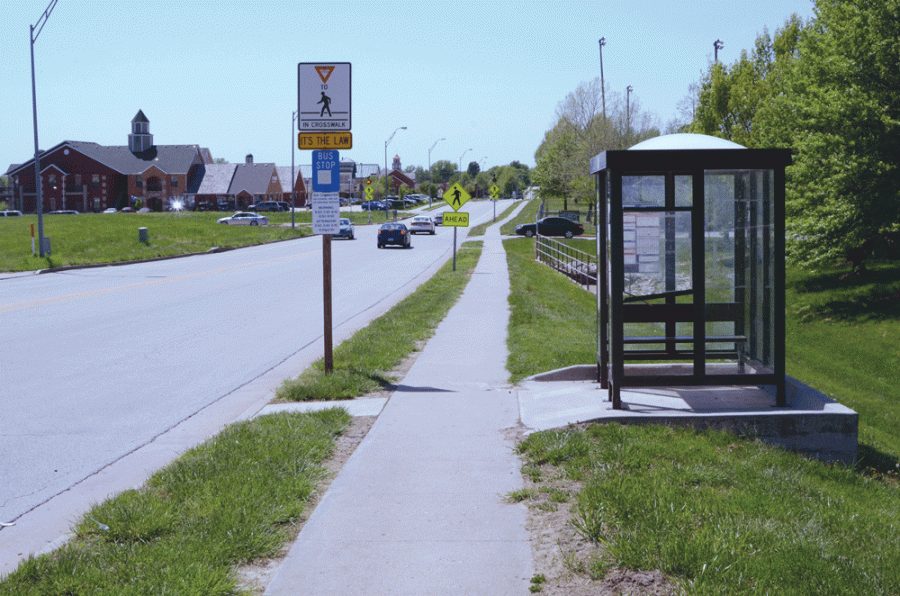
With the addition of freshmen to Columbia Public Schools’ high schools next year, the district made plans to provide a city bus route that catered to students.
Columbia Transit, Columbia’s city bussing company, worked out a pilot program that ran April 15 – May 15 for Hickman High school students to use the city bus services. The bus route went the length of West Broadway and Worley Street and then travels to the west Hy-Vee location and doubles back.
RBHS will start a pilot program of their own in August of 2013, Dr. Chris Belcher, superintendent of CPS said.
Junior Thelton Cobb occasionally rides the city bus to and from school when he stays at his brother’s house.
“I get on three buses from my brother’s house, only because there is just one bus that rides around Rock Bridge’s side of [Columbia],” Cobb said. “Then there’s the one from his house and the one from there to the bus on this side of town, but I go on Providence around the Social Security Office and down Green Meadows and then to Bethel and the Diego transfer and then to Rock Bridge.”
Cobb said the bus ride usually takes an hour, though, he said he would be willing to ride it more if it did not take that long. Belcher said these new routes will be shorter than the average city bus route.
“We have the busses running every 40 minutes after and before school,” Belcher said.”The routes take about 30 minutes. We’re just trying to get the students to give us feedback.”
During Hickman’s pilot, the Parent-Teacher Association provided Hickman students with 100 bus passes to give to students so they could try out the the program. To pick up a bus pass, one had to agree to ride the city bus at least three times a week and give the school feedback. The bus passes worked on all the city busses throughout the day, Belcher said.
Belcher hopes in the future the school district will be able to provide the bus passes for students . At this time, legislation does not allow the school to purchase the bus passes to give to students because of safety regulations.
“We’re working with them to write new legislation. We should have the ability to, on a voluntary basis, allow secondary students to use public transportation as well as the yellow and black busses,” Belcher said. “Their [legislators] issue is yellow and black busses have certain standards of safety, but I’m saying public transportation is liable, too, for the people that ride.”
Even though city busses can be a less expensive option for certain areas, Belcher explains, they are not going to replace school busses any time soon.
“[City busses are] not really a cheaper option on a lot of issues, just certain areas are. For the big routes we run into the subdivisions and rural areas, city busses just aren’t going to be able to do that. We need efficiency,” Belcher said. “City busses don’t seat as many people. Our busses are meant for rigid narrow roads with busses you can fit a lot of students on. City busses are side seating and standing up; they’re not meant to pack them in quite the same way. Regulations on safety require that kids sit with something in front of them. So I think we will just try this high school experiment and see where it goes from there.”
Belcher prefers a more hands-off approach when it comes to advertising the new bus route.
“I want this to be driven by student councils or student governments because if they don’t make it work, I can’t make it work,” Belcher said.
RBHS student council representative Kelsey Harper is excited about the opportunities for students and plans on advertising the new system soon.
“At our last meeting we were mainly focused on preparing for the assembly and mud volleyball,” Harper said, “so we haven’t been able to discuss it, but I’m sure we will soon. It sounds like a great opportunity to use a system that is already in place to make it easier for students to get to school.”
By Antonina Johnston













































































